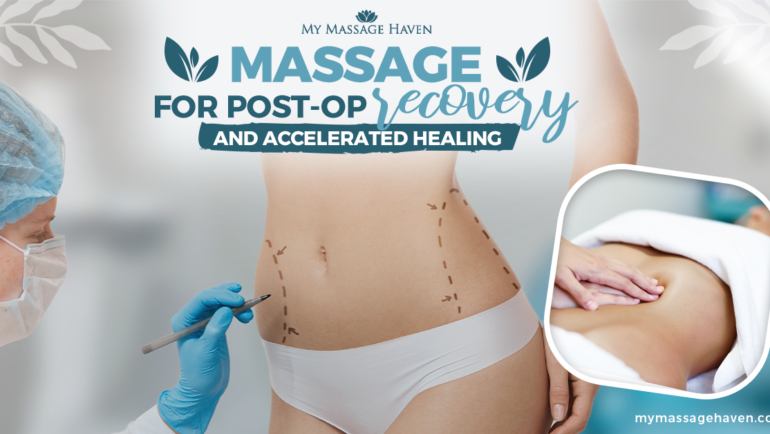If you enjoy massages in spa-like environments, that’s more than enough reason to keep getting them when it’s safe to do so in the future. But if you’re wondering whether or not massages have other benefits for people with medical conditions—or if the amateur rubdowns you love so much are doing anything—it turns out they can be helpful, depending on the circumstances.
But let’s not get carried away. Even though there is research to support the benefits of a massage, you can’t just book a massage in lieu of seeking medical attention. And, while trying to massage your head to manage an occasional headache or gently kneading your abdomen to relieve a stomach ache might be doable, it’s best to talk with a professional if you’re looking to alleviate pain caused by a medical condition (even if you’re just chatting with a therapist to get self-massage tips). Additionally, you should talk to your primary care doctor before booking a massage for a specific ailment, or a specialist you see for the condition in question. That said, there’s research to support that massage therapy can help with the following:
The number one benefit of massage is stress-relief, Deery explains. We need more research to figure out exactly how much massage therapy reduces stress-hormones like cortisol, but anecdotal evidence suggests that massages can help lower stress and encourage relaxation.
Physical touch does more than simply feel good. As SELF previously reported, several studies suggest that physical touch can lower blood pressure and increase hormones like oxytocin, which makes us feel good. And a small 2020 study published in the Journal of Health Psychology found that massages that couples give each other are beneficial for the giver and the receiver. So, even if you’re not looking for a medical massage, if you have a partner and are looking to bond a bit, it’s not a bad idea to break out some massage oil and use it on them (or vice versa).
If you’re dealing with constipation or other digestive issues, a stomach massage might help alleviate some of your discomfort. A 2016 study published in Gastroenterology Nursing found that abdominal massages helped people dealing with post-surgery constipation move their bowels and feel a little better.
People with fibromyalgia experience chronic pain as well as sleep, memory, and mood symptoms. While massage therapy isn’t a cure for the condition, the Mayo Clinic says that it is a complementary treatment (along with medication, counseling, and physical therapy). Keep in mind, however, that, in some cases, massage therapy can make your pain worse, the Mayo Clinic explains. It’s best to chat with your primary care doctor about the potential benefits of massage for fibromyalgia, and make sure you discuss your condition with your massage therapist beforehand.
A tension headache, or concentration headache, can feel like there’s a tight band wrapped around your head, the Mayo Clinic explains. The cause isn’t fully understood, but there is evidence that massages can provide relief for this kind of headache, the Mayo Clinic says. Specifically, it helps relieve muscle tension in your head, neck, and shoulders (which might alleviate your headache symptoms).
As we mentioned above, massages positively impact stress, and diminished stress levels can help encourage sleep (though there are other sleep hygiene habits—like having a bedtime ritual and reducing screen time before bed—you might want to explore as well).
Myofascial pain syndrome is a chronic pain condition where pressure on your muscles can cause pain (sometimes in places that don’t seem related), the Mayo Clinic explains. Though there’s no cure for it, some patients do find benefit from having a physical therapist or massage therapist work on the areas where they’re experiencing pain to relieve muscle tension, the Mayo Clinic explains.
When your muscles are sore and inflamed, a massage can help bring blood flow to the area (and encourage recovery), according to a 2015 meta-analysis study published in Current Reviews in Musculoskeletal Medicine.
Arthritis involves swelling and pain in your joints, the Mayo Clinic says. As your massage therapist kneads and massages muscles, blood flows to your joints, which might provide some temporary relief, the Mayo Clinic explains. Be sure to mention that you have arthritis before your massage therapy session so that your therapist can walk you through how you might work together.
Getting a massage during pregnancy can improve circulation, according to the American College of Obstetricians and Gynecologists (ACOG). Just make sure you check with your doctor before booking an appointment and be sure to tell your massage therapist that you’re pregnant (even if you’re not showing).




